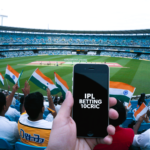In recent years, India has witnessed a surge in the popularity of gambling apps, particularly among its younger population. As smartphones and internet access continue to expand across the country, online gambling has evolved from a niche hobby into a mainstream activity. This article explores the factors behind this rise, the psychological and social implications for young Indians, and what it means for the future of gambling in the country.
Gambling Apps and Their Popularity
Gambling apps are mobile applications designed to enable users to participate in various gambling activities, including betting, casino games, poker, and even fantasy sports, all from their smartphones. These apps provide a wide array of gaming options, ensuring that they appeal to a diverse audience. One of the most attractive features of gambling apps is the real-time interaction they offer. Players can compete against others, engage in live betting, or play games like poker and blackjack in a virtual environment that closely resembles a traditional casino. This interactive and immersive experience keeps players engaged, enhancing the thrill of gambling right from the palm of their hands.
Why are Gambling Apps Becoming Popular Among the Younger Generation
The younger generation in India is increasingly gravitating towards digital entertainment, and gambling apps fit seamlessly into this trend. This shift can be attributed to several factors, including the widespread use of smartphones, access to the internet, and a growing culture of online gaming. With the majority of young people in India owning smartphones and spending considerable time online, gambling apps are easily integrated into their daily routines. The fact that users can gamble anytime and anywhere, without the need to visit a physical casino or betting house, makes gambling apps incredibly attractive. For millennials and Gen Z, who are already familiar with digital platforms, gambling apps present a natural extension of their online entertainment habits.
Moreover, gambling apps cater to the younger generation’s love for gaming by offering engaging and immersive experiences. Many of these apps are designed with sleek graphics, appealing interfaces, and features that make them feel more like video games than traditional gambling. This combination of gaming and betting appeals to the younger demographic’s desire for instant entertainment. Additionally, the social aspects of gambling apps, such as competing against friends or sharing achievements on social media, also enhance their appeal. As gambling apps tap into the tech-savvy nature of today’s youth, they continue to gain momentum in India.
Factors Driving the Growth of Gambling Apps
The rapid rise of gambling apps in India can be attributed to several factors, all of which are interconnected with the country’s technological and economic changes. These factors have played a significant role in making gambling apps easily accessible and highly appealing, especially to the younger generation. Let’s break down the main drivers of this growth:
Digitalization and Smartphone Usage
India’s digital revolution has been a key factor propelling the growth of gambling apps. Over the last decade, India has experienced a boom in internet connectivity and smartphone usage, especially among the younger demographic. The availability of affordable smartphones, along with widespread 4G internet coverage, means that millions of young Indians can access the digital world like never before. This revolution has created an environment in which mobile apps, including gambling apps, are now integrated into the daily lives of many young people.
The ease with which gambling apps can be downloaded has made them incredibly convenient. Most gambling apps are lightweight, meaning they don’t require much space on smartphones, and they can be installed quickly. As a result, young people can engage in online gambling at any given time, making it an attractive option for entertainment. Additionally, the digital landscape in India supports the growing gaming culture, with many young adults already accustomed to online gaming. Gambling apps have effectively tapped into this market, offering a variety of options from online casino games to sports betting, all available at the touch of a button.
Key Points Driving Growth:
- Widespread internet access and affordable smartphones.
- Instant downloadability and ease of use for gambling apps.
- Integration with the existing digital lifestyle, making apps accessible anytime and anywhere.
Easy Access to Gambling Platforms
In the past, gambling required individuals to physically visit casinos or betting shops, which could be both inconvenient and restrictive. These traditional forms of gambling often involved a long journey to reach a casino, limited operating hours, and sometimes prohibitive entry requirements. Gambling apps have completely changed this dynamic by offering a platform that’s always available with just a tap on a smartphone.
Today, gambling is as simple as logging into an app, making it accessible 24/7. Whether someone is at home, commuting, or taking a break at work, they can easily access their favorite gambling games. This kind of accessibility has been a game-changer for the younger generation in India. The convenience factor is one of the primary reasons why gambling apps have become so popular. Users no longer have to wait for the weekend or plan a trip to a physical casino to engage in their favorite pastime. Moreover, gambling apps cater to a wide range of interests, whether it’s betting on sports, playing card games, or engaging in online poker, making them highly customizable to user preferences.
Key Benefits of Easy Access:
- Instant, 24/7 access to gambling platforms.
- No need to travel to physical casinos, making it more convenient.
- A wide variety of games and betting options available at any time.
Increased Disposable Income Among the Youth
With the rise of the gig economy and the increased availability of job opportunities, especially in startups and tech-driven industries, young people in India have more disposable income than ever before. This financial freedom has allowed them to engage in various recreational activities, including gambling. For many, gambling offers a way to earn money quickly or have fun while also taking risks.
The increasing financial independence of the younger generation has also contributed to the rise of gambling apps. Young people, particularly millennials and Gen Z, are spending their money on entertainment, and gambling has become a significant part of this spending. The ability to make quick, microtransactions through mobile payment systems makes it easier for users to engage in gambling without worrying too much about their finances. For many, gambling is seen as a way to have fun, enjoy some thrill, and potentially win money without significant financial risk.
However, while increased disposable income is a major contributor to the popularity of gambling apps, it can also have a downside. With financial freedom comes the temptation to take bigger risks, which can lead to unhealthy gambling habits. This is particularly concerning for younger individuals who may not yet have the maturity to manage their money responsibly. When the allure of instant gratification becomes too powerful, it can lead to problematic gambling behaviors, including addiction and financial instability.
Key Factors to Consider:
- The rise of the gig economy and more financial freedom for young people.
- Disposable income is being used for recreational activities like gambling.
- The risk of irresponsible gambling due to increased financial freedom.
These factors, when combined, have created an ideal environment for gambling apps to thrive among India’s youth. The combination of digital accessibility, easy access to gambling platforms, and increased disposable income makes it easier than ever for young people to engage in online gambling, although the potential for risky behavior remains a concern.
The Role of Social Media and Marketing
The Influence of Social Media on Gambling Culture
Social media has played a pivotal role in shaping and normalizing gambling behavior among young people in India. Platforms like Instagram, Facebook, YouTube, and TikTok have become key spaces for promoting gambling apps and making them a part of everyday digital life. Influencers, celebrities, and content creators with large followings often showcase gambling apps in a glamorous light, suggesting that these platforms are an enjoyable and exciting way to spend time. By aligning gambling with popular trends or showcasing big wins and fun experiences, these influencers make gambling appear appealing, especially to young people who are looking for new forms of entertainment.
Moreover, social media provides a space for individuals to connect, share experiences, and discuss their gambling activities. Platforms like Instagram and Twitter often see users posting their achievements, such as winning money on gambling apps or discussing strategies. This peer influence contributes to creating a sense of community around gambling, making it feel more socially acceptable. The constant stream of social media posts about gambling apps helps solidify the idea that gambling is a normal, fun activity, further fueling the growing culture around online betting and gambling in India. These platforms also serve as a tool for spreading gambling trends and tips, which further encourages young people to engage in these activities.
| Social Media Influence | Impact on Gambling Culture | Key Platforms |
| Influencers and Celebrities | Make gambling apps appealing | Instagram, YouTube, TikTok |
| Peer Influence & Sharing Experience | Normalizes gambling as fun | Facebook, Twitter, Reddit |
| Social Validation | Increases engagement & excitement | Instagram, Snapchat |
Online Advertisements Targeting the Youth Demographic
Online advertising has become one of the most powerful tools for promoting gambling apps among the younger generation. Gambling apps utilize sophisticated algorithms and data analytics to target specific demographics, particularly younger users who are active on social media platforms. By analyzing user behavior, interests, and engagement patterns, these apps tailor their advertisements to appeal directly to the youth. For instance, an ad may appear on Instagram featuring a celebrity endorsement or a sponsored post that offers a sign-up bonus, making it hard to ignore. These ads often include catchy taglines, promotions, or bonuses, making the apps appear more appealing and accessible to potential new users.
Additionally, the use of targeted advertising plays into the psychology of FOMO (Fear of Missing Out), which is particularly prevalent among younger people. Gambling apps often use this to their advantage by creating a sense of urgency or excitement, pushing users to try their luck. Whether it’s through Instagram stories, YouTube pre-roll ads, or Facebook pop-ups, these advertisements create an environment where young people feel they are missing out on an opportunity if they don’t sign up for the app. The personalization of ads makes them feel more relevant and compelling, which increases the likelihood that young people will take action and engage with the gambling platform.
| Type of Advertisement | Strategy | Target Audience |
| Personalized Ads | Tailored based on user behavior & interests | Millennial & Gen Z |
| Influencer & Celebrity Endorsements | Social proof & peer influence | Social media users |
| FOMO-driven Ads | Urges quick action & participation | Young, digitally active |
The Young Generation’s Relationship with Gambling
Changing Perceptions About Gambling in India
Historically, gambling in India has been viewed as a taboo subject and often associated with illegal activities. Traditional views on gambling have been shaped by cultural, religious, and legal frameworks that have made it difficult for gambling to be accepted as a mainstream activity. However, with the rise of online gambling apps, these perceptions are gradually changing. The younger generation, particularly those in urban areas, now views gambling as a form of entertainment rather than an immoral or forbidden activity. This shift can be attributed to the increasing normalization of gambling, facilitated by digital platforms, where anonymity and convenience play a crucial role.
Young people, especially millennials and Gen Z, see online gambling as a legitimate and socially acceptable form of leisure. The advent of gambling apps that provide access to a wide variety of games, such as poker, sports betting, and casino games, has made gambling an attractive and exciting option for many. These apps offer a certain level of anonymity, allowing users to participate in gambling activities without fear of judgment or societal pressure. The convenience of gambling from the comfort of their own homes, combined with the ability to play at any time, has further fueled this cultural shift. As online gambling becomes more integrated into everyday life, it’s likely that these changing perceptions will continue to evolve, potentially leading to broader acceptance of gambling as an entertainment activity.
How the Younger Generation Views Gambling as Entertainment
For the younger generation in India, gambling apps are primarily viewed as a form of entertainment, rather than a means of earning large sums of money. These apps provide instant access to a wide variety of games that offer quick rewards and excitement. For many young people, the thrill of playing games like poker, rummy, or fantasy sports is more about the experience and enjoyment rather than the possibility of making a profit. The fast-paced nature of online gambling, combined with the social aspects of competing against others or sharing experiences online, adds to the entertainment value.
The instant gratification provided by these apps is particularly appealing to young users who are accustomed to fast and immersive experiences. Whether they are looking for a quick escape from stress or simply seeking something to do during their free time, gambling apps fit well into the lifestyle of today’s youth. Moreover, many gambling apps offer low stakes, allowing users to start small without significant financial risks. This makes gambling more accessible, particularly for young people who may not have large disposable incomes but are still eager to experience the excitement of the games. Thus, while gambling may come with financial risks, for many young people, it’s largely seen as just another form of digital entertainment.






